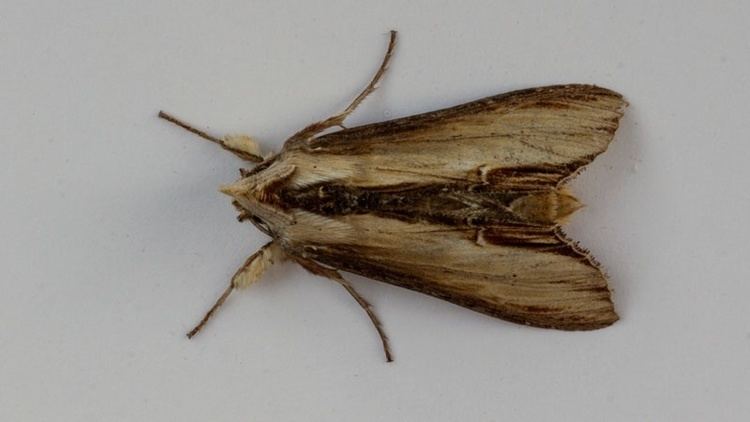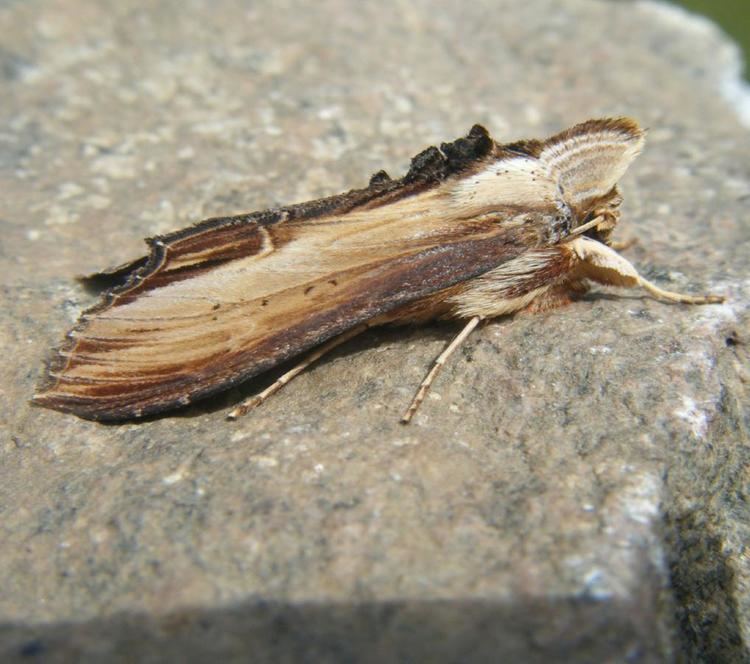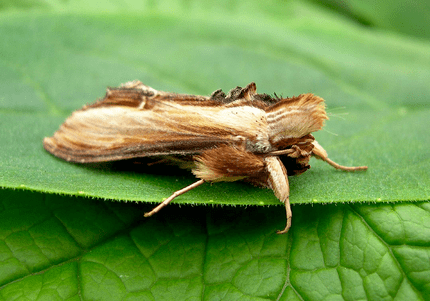Genus Cucullia Rank Species | ||
 | ||
Similar Cucullia, Shargacucullia, Shargacucullia scrophulariae, Shark, Cuculliinae | ||
Mullein moth caterpillar shargacucullia verbasci fi rildalirfur fi rildi k ngalj s
The mullein moth, (Cucullia verbasci), is a noctuid moth with a Palearctic distribution.
Contents
- Mullein moth caterpillar shargacucullia verbasci fi rildalirfur fi rildi k ngalj s
- Description
- Range
- Status
- Egg
- Larva
- Pupa
- Imago
- Host plants
- References
Description

Forewing broad [for the genus], brownish ochreous; the costal streak and those preceding and following the lower part of outer line deep redbrown; the lunules following the line white and conspicuous; space below median paler, becoming almost whitish above the outer dark brown streak; stigmata marked by dark brown spots; a row of deep brown streaks from apex to vein 6, and another, more faint, from below apex to end of cell; hindwing in male whitish, with dark veins and cellspot, becoming diffusely fuscous along termen; in female darker throughout.
Larva is creamy with black and yellow spots.
Range

It is found in western, southern and central Europe and North Africa. However, there are only individual finds from Denmark and southern Finland in the north. The eastern presence extends to western Afghanistan. It ia also found in Israel and Turkey. In the Alps, it rises up to a height of 1600 meters.
Status

Habitat – mainly dry and warm places, scrub, dry grassland, on rocky slopes, steppe as well as parks and gardens.
Habits – completely strips the leaves of the host plant and can be a horticultural pest.
Egg

Eggs are laid singly on the under-surface of leaves of food plants. Initially white, they turn grey before hatching.
Larva
The larva is the most commonly encountered part of the life cycle, clearly visible as it feeds on the leaves of its host plants. (Waring et al., 2003) When fully grown it is 44–48 mm long. (Porter, 1997)
Pupa
The pupa is the longest part of the life cycle (up to 5 years in captivity). It lives underground in a strong cocoon. (Waring et al., 2003)
Imago
The species displays much variation in size: wingspan ranges between 45 mm and 56 mm. They also show minor variation in colour. The moth flies from late April to June depending on the location.
Host plants
See Robinson, G. S. et al.
